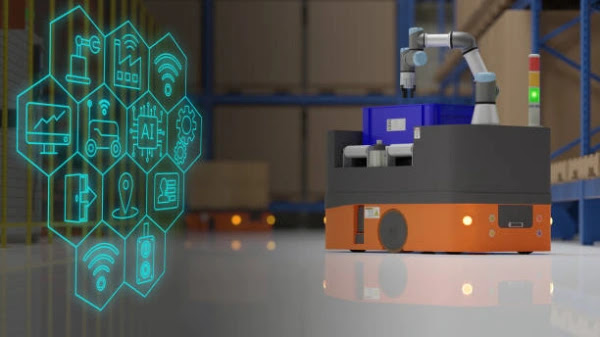Featured
- Get link
- X
- Other Apps
5G Technology
Impact on Smart Connectivity
Introduction
The rollout of 5G technology represents a significant
milestone in the evolution of wireless communication, promising faster speeds,
lower latency, and greater capacity than previous generations of mobile networks. Beyond simply enabling faster downloads and smoother streaming, 5G
technology has the potential to revolutionize connectivity and enable the
widespread adoption of smart technologies across various industries and
sectors. This article explores the key features of 5G technology, its impact on
smart connectivity, and the implications for businesses, consumers, and society
as a whole.
- Understanding 5G Technology:
5G, short for fifth-generation wireless technology,
represents the latest iteration of mobile network standards developed by the
telecommunications industry. Building upon the foundation laid by previous
generations of wireless technology (2G, 3G, and 4G), 5G technology promises to
deliver faster data speeds, lower latency, and greater reliability, unlocking
new possibilities for connectivity and innovation.
Key features of 5G technology include:
- Enhanced data speeds: 5G networks
offer significantly faster data speeds than previous generations, with
theoretical peak speeds of up to 20 gigabits per second (Gbps). This
enables users to download and upload data at much higher rates, making
activities such as streaming high-definition video, video conferencing, and
online gaming smoother and more immersive.
- Ultra-low latency: 5G technology
reduces latency—the time it takes for data to travel between devices and
networks—to as low as one millisecond (ms). This near-real-time
responsiveness is critical for applications that require instantaneous
feedback, such as autonomous vehicles, remote surgery, and augmented
reality (AR) and virtual reality (VR) experiences.
- Massive connectivity: 5G networks
can support a significantly higher number of connected devices per square
kilometer compared to previous generations, making them ideal for the
Internet of Things (IoT) applications. This massive connectivity enables
the deployment of smart sensors, devices, and infrastructure in urban
environments, industrial facilities, and rural areas.
- Network slicing: 5G technology
introduces the concept of network slicing, which allows operators to
partition their networks into virtualized, independent "slices"
tailored to specific use cases, applications, or customers. This enables
operators to allocate network resources more efficiently, prioritize
critical services, and provide customized connectivity solutions for
different industries and sectors.
Impact of 5G on Smart Connectivity:
The rollout of 5G technology is poised to have a
transformative impact on smart connectivity across various domains, including:
- Smart cities: 5G technology
enables the deployment of smart city solutions that leverage connectivity,
data analytics, and IoT devices to improve urban infrastructure, enhance
public services, and promote sustainability. From smart lighting and
traffic management to environmental monitoring and waste management, 5G
networks provide the bandwidth, reliability, and low latency required to
support a wide range of smart city applications.
- Industrial IoT (IIoT): In the
industrial sector, 5G technology facilitates the adoption of Industrial
IoT (IIoT) solutions that enhance automation, efficiency, and productivity
in manufacturing, logistics, and supply chain operations. With 5G
connectivity, industrial facilities can deploy smart sensors, robotics,
and autonomous vehicles to optimize processes, monitor equipment health,
and enable predictive maintenance in real-time.
- Healthcare: 5G technology has the
potential to revolutionize healthcare delivery by enabling remote
monitoring, telemedicine, and immersive healthcare experiences. With 5G
connectivity, healthcare providers can deliver high-quality medical care
to patients in remote or underserved areas, perform remote consultations
and diagnostics, and enable immersive training and simulation for medical
professionals.
- Transportation: In the
transportation sector, 5G technology supports the development of connected
and autonomous vehicles (CAVs) that leverage high-speed, low-latency
connectivity to enhance safety, efficiency, and mobility. With 5G
networks, CAVs can communicate with each other, with infrastructure, and
with pedestrians in real-time, enabling features such as collision avoidance,
traffic optimization, and autonomous navigation.
- Retail and entertainment: 5G
technology transforms the retail and entertainment industries by enabling
immersive experiences, personalized services, and seamless connectivity.
With 5G connectivity, retailers can deploy augmented reality (AR) and
virtual reality (VR) experiences to enhance shopping experiences, enable
virtual try-ons, and create interactive marketing campaigns that engage
customers in new and innovative ways.
Implications for Businesses and Consumers:
The widespread adoption of 5G technology has significant
implications for businesses, consumers, and society as a whole, including:
- Enhanced productivity: 5G
technology enables businesses to leverage connectivity, automation, and
data analytics to streamline operations, improve efficiency, and enhance
productivity. With 5G networks, businesses can deploy IoT solutions,
cloud-based services, and real-time analytics to optimize processes,
reduce costs, and accelerate innovation.
- Improved customer experiences: 5G
technology enables businesses to deliver richer, more immersive customer
experiences through high-speed, low-latency connectivity. From AR-enhanced
shopping experiences to virtual reality (VR) entertainment content, 5G
networks enable businesses to create engaging and interactive experiences
that delight customers and drive brand loyalty.
- Expanded market opportunities: 5G
technology unlocks new market opportunities and revenue streams for
businesses across various industries, from smart cities and industrial IoT
to healthcare and entertainment. By leveraging 5G connectivity, businesses
can develop innovative products, services, and business models that
address emerging market needs and capitalize on the growing demand for
smart and connected solutions.
- Digital inclusion: 5G technology
has the potential to bridge the digital divide and empower underserved
communities by providing access to high-speed, reliable connectivity. With
5G networks, governments, non-profit organizations, and private sector
partners can work together to expand broadband access, improve digital
literacy, and promote economic development and social inclusion in underserved
areas.
Challenges and Considerations:
Despite its transformative potential, the rollout of 5G
technology also presents several challenges and considerations that
stakeholders must address, including:
- Infrastructure deployment: The
rollout of 5G networks requires significant investment in infrastructure,
including new base stations, small cells, and fiber optic cables.
Governments, regulators, and industry stakeholders must work together to
accelerate infrastructure deployment, streamline permitting processes, and
address barriers to investment to ensure widespread access to 5G
connectivity.
- Spectrum allocation: 5G technology
relies on access to spectrum—a finite and valuable resource that must be
allocated and managed effectively. Governments and regulators must
allocate spectrum bands for 5G use, coordinate spectrum assignments across
different regions and operators, and ensure interference-free operation to
maximize the benefits of 5G connectivity.
- Security and privacy: The
proliferation of connected devices and data generated by 5G networks
raises concerns about security and privacy risks. Governments, businesses,
and consumers must implement robust security measures, encryption
techniques, and data protection policies to safeguard sensitive
information and mitigate the risk of cyberattacks, data breaches, and
privacy violations.
- Regulatory frameworks: The
deployment of 5G technology requires regulatory frameworks that support
innovation, competition, and investment while protecting consumer
interests and ensuring compliance with legal and ethical standards.
Governments must update and adapt existing regulations to address emerging
challenges and risks associated with 5G technology, such as spectrum management,
network security, and data privacy.
Conclusion
5G technology represents a transformative leap forward in
wireless communication, enabling faster speeds, lower latency, and greater
capacity than previous generations of mobile networks. Beyond simply enabling
faster downloads and smoother streaming, 5G technology has the potential to
revolutionize connectivity and unlock new opportunities for innovation and
economic growth across various industries and sectors. By leveraging 5G
connectivity, businesses can enhance productivity, improve customer
experiences, and capitalize on emerging market opportunities, while governments
can promote digital inclusion, empower underserved communities, and create more
sustainable and resilient societies. However, realizing the full potential of
5G technology requires addressing challenges related to infrastructure
deployment, spectrum allocation, security, and regulation, and fostering
collaboration among stakeholders to ensure widespread access to 5G connectivity
and maximize its benefits for businesses, consumers, and society as a whole.
- Get link
- X
- Other Apps


